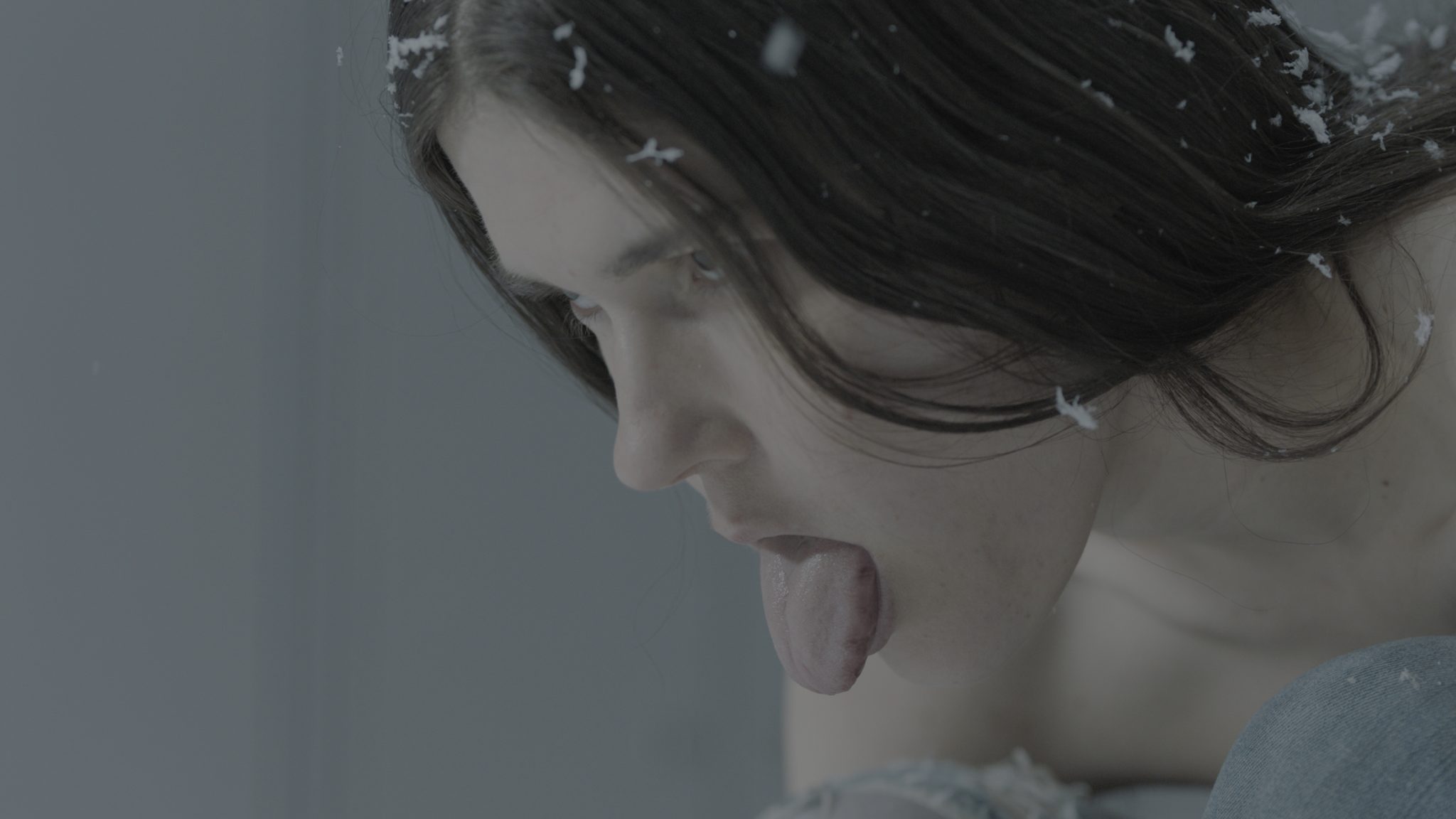The deviant figure of the clown acquires new potency in the artist’s twilight worlds
‘There’s nothing funny about a clown in the moonlight,’ remarked Lon Chaney, horror’s silent-film star. And indeed the trope of the sinister clown, dulled by a century of increasingly maudlin cameos in popular culture, has in the hands of Anne Imhof acquired new potency befitting the suffusive pall of the present moment. The hands in question belong more precisely to artist Eliza Douglas, Imhof’s collaborator and partner: in a culminating passage from last year’s performance Natures Mortes at Paris’s Palais de Tokyo, a young man in a ‘killer clown’ T-shirt of the sort favoured by nu-metalheads leans against a bank of lockers flanking a wall as a shirtless Douglas approaches from behind. With the steely gaze of a hallway bully (another cinema trope that has taken on new and sickening implications in recent years), she grabs him by the collar and drags him to the centre of the gallery; kneeling, facing front, before him, she pulls his shirt out from his chest and over her own head. The performer, her face now masked by the grimacing clown, pauses to unfurl her fingers in a slow wave.

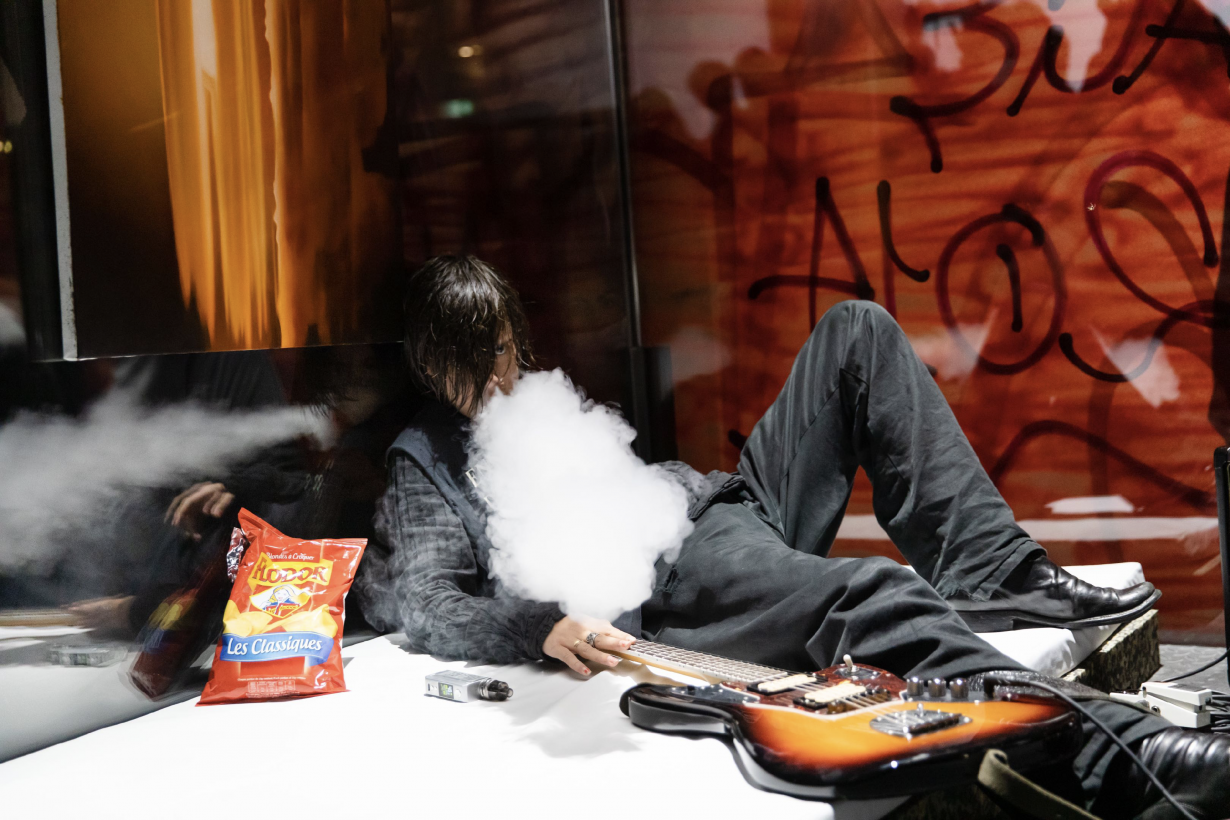
The Berlin-based Imhof, who this autumn receives a mid-career display at Amsterdam’s Stedelijk Museum in addition to a solo show across Sprüth Magers’s three-storey London gallery, orchestrates a crepuscular artistic vision that contrasts sharply with the crisp, exquisitely wrought provocations of her mediagenic performers, which spread virally over audience-members’ social-media channels in real time as the works play out. The pieces appear set, as Serpentine Galleries artistic director Hans Ulrich Obrist noted in 2016 in a conversation with the artist, in “neither day nor night, a kind of twilight”. This conversation was occasioned by the debut of Imhof’s trilogy Angst I, II and III (2016), a suite that would introduce a string of dramatically scored multidisciplinary endurance works made over the next six years. In arresting, sometimes violently suggestive pieces, Imhof ’s performers, culled from modelling, dance and acting spheres, and who skew young and gaunt, drift amid a smouldering trash-heap of cultural citations, many drawn from industrial metal and electronica subcultures.
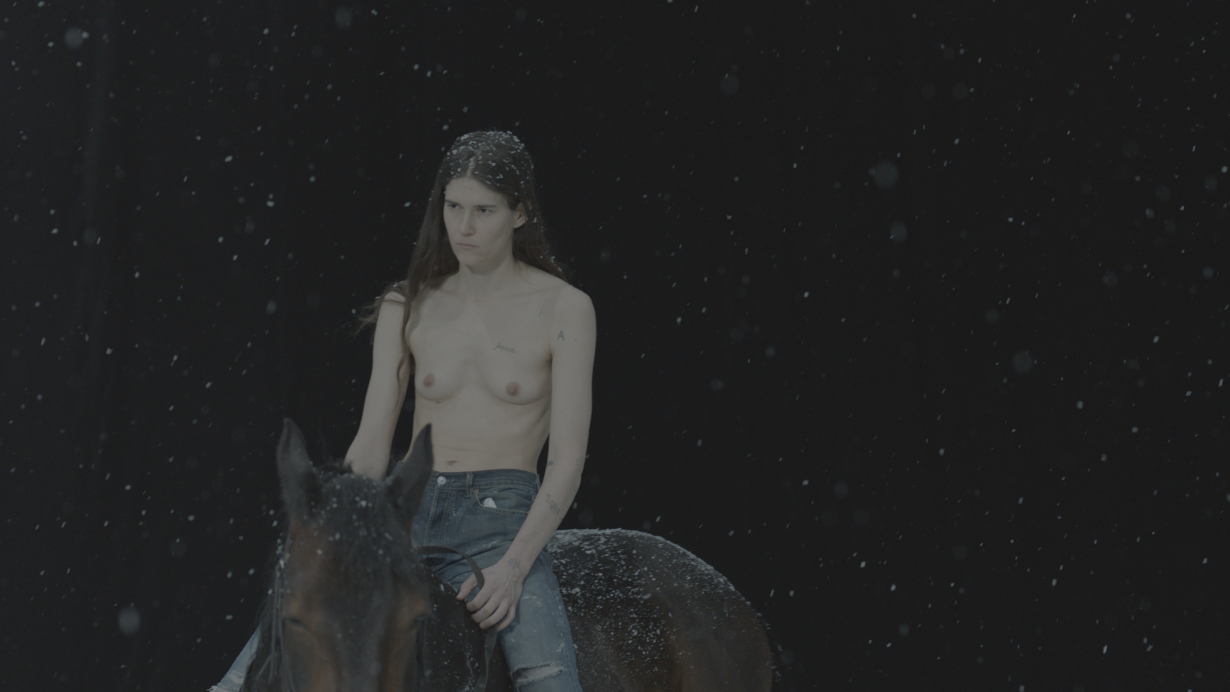
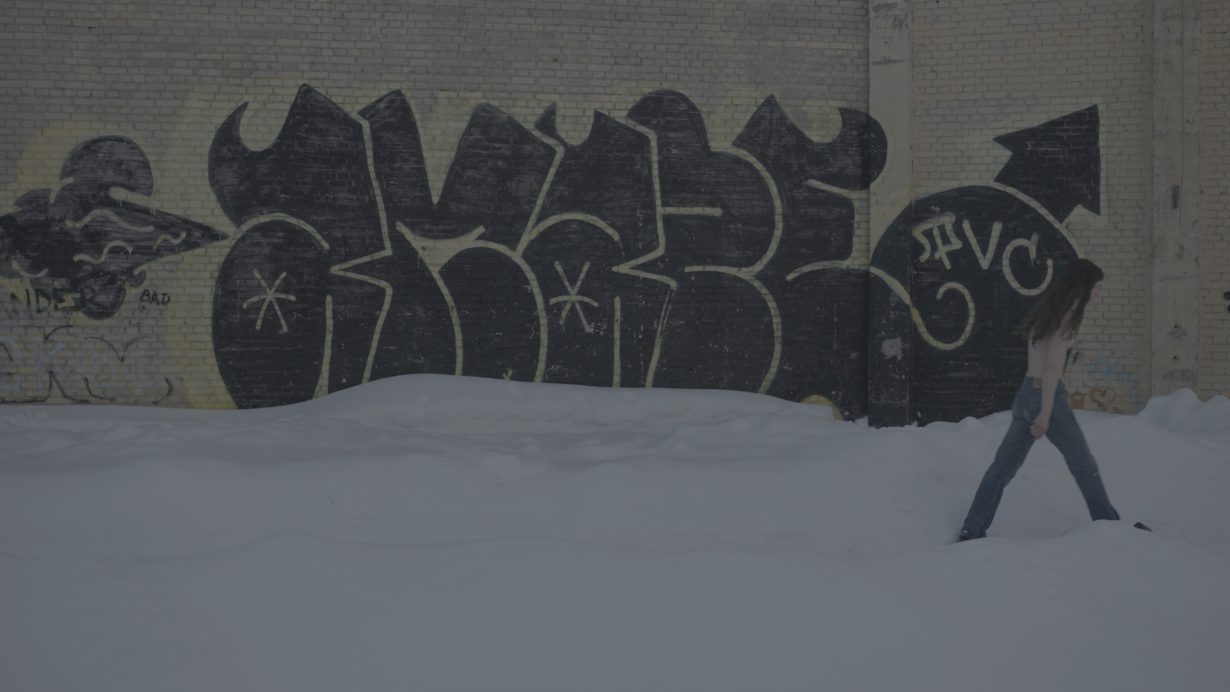

The works’ apocalyptic pallor is girded by an undercurrent of restlessness, which Imhof likened in a Zoom conversation with me this past July to the unrest present in experimental dance (notably that of 1980s choreographic works that wed experimental dramaturgy with rigorous balletic technique). The German artist’s interest in dance dates back to early exposure to the choreographer William Forsythe, whose Frankfurt-based company was active during her own formative years in the city while a student at the Städelschule arts academy, and extends to such choreographers as Michael Clark and Charles Atlas. Imhof would go on to form her own company of sorts – which in recent years has, in addition to Douglas, included the dance/electronica composer Billy Bultheel, photographer Nadine Fraczkowski, Forsythe dancer/choreographer Josh Johnson and performers Frances Chiaverini and Mickey Mahar. She described the studio watching taped performance recordings for reference (and here I imagined them huddled around a VCR, observing how previous works maintained their frenetic urgency without exhausting either dancers or audience). “Pieces like 1988’s Impressing the Czar [Forsythe’s postmodern ballet masterwork, shot through with political and cultural references, and pointedly indifferent to conventional notions of plot],” Imhof cites by way of example: “We looked at its group scenes over and over.”
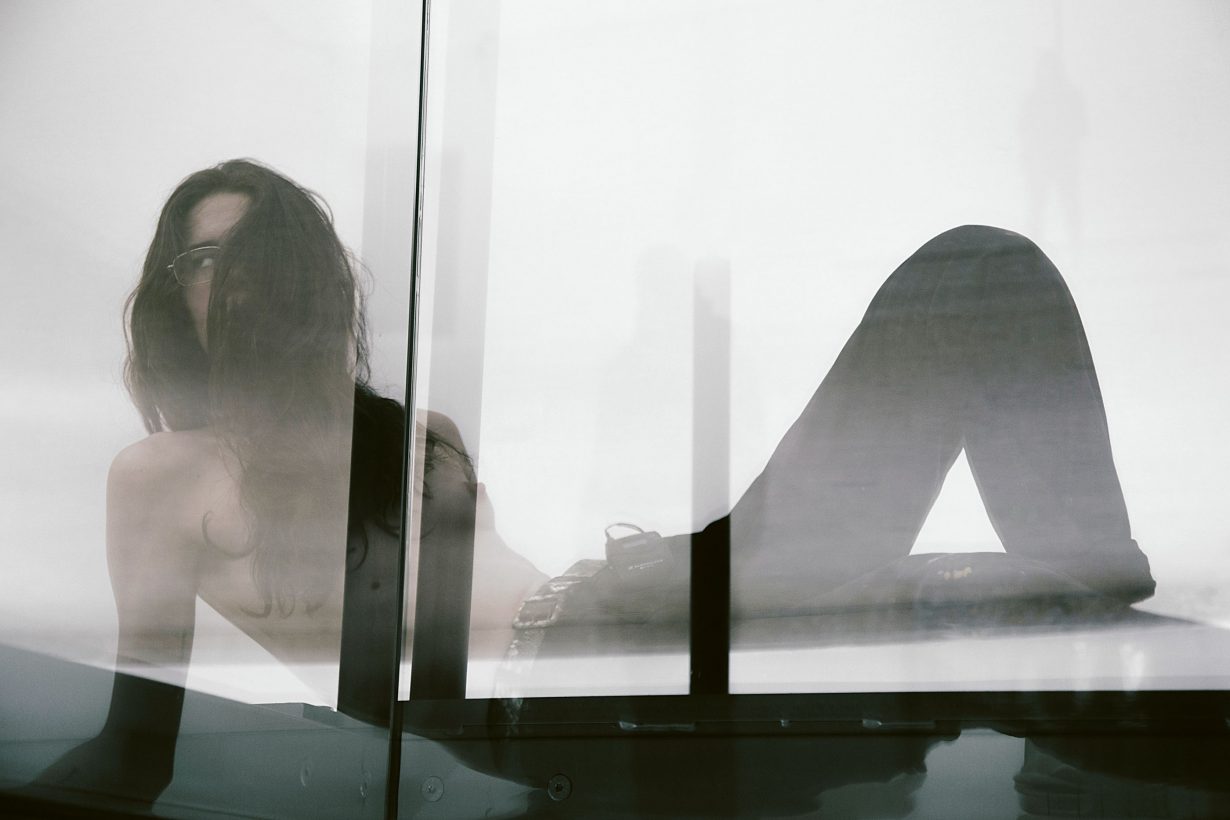
Already curdling in Angst is the deviant figure of the jester or fool, here invoked via the subtle inversion of a performer’s hands, in what is, in ballet terminology, referred to as port de bras. In classical ballet, port de bras describes a set of fixed positions by which gracefully arced limbs frame the torso at various aesthetically pleasing angles; in each position the dancer’s two middle fingers droop slightly below the other eight; instead, the performer raised them in an international gesture of provocation. In her performances and the wider sphere of her practice, which extends to landscape painting and notably to figure drawing, Imhof examines the gesture, exploring its capacity to signal and, conversely, its propensity to manipulate – to stir its recipient’s indignation without ever quite voicing its intentions to do so (see the imperious snap, pointedly averted eyes, a wagging tongue between two fingers). The words ‘gesture’ and ‘jester’ share an etymological root in the Latin gesta, referring both to doings and, alternately – in a precursor to the ‘speech acts’ evoked in philosopher J. L. Austin’s How to Do Things with Words (1962) – to do by telling, notably, for example, in the recounting of past exploits, particularly in a sardonic or mocking fashion. In our conversation Imhof cited the postures and physical affects of pop stars such as Dua Lipa and Kurt Cobain, idols whose personae can be traced in no small part to their distinct and recognisable carriage.
Imhof followed Angst with Faust, a critically lauded and polarising tour de force inundated with charged signifiers (such as the caged Doberman pinschers guarding the threshold of the Nazi-built German Pavilion at the 2017 Venice Biennale, where it received the Golden Lion award for outstanding national contribution). In a section of the score titled ‘Last Song’, Douglas assumes the jester role. From a plexiglass shelf mounted at a precarious slant to the wall, she accompanies Chiaverini with vocals that give way to an extended guttural, wordless scream that effectively undermines the grave piety of the choral singing that preceded it.
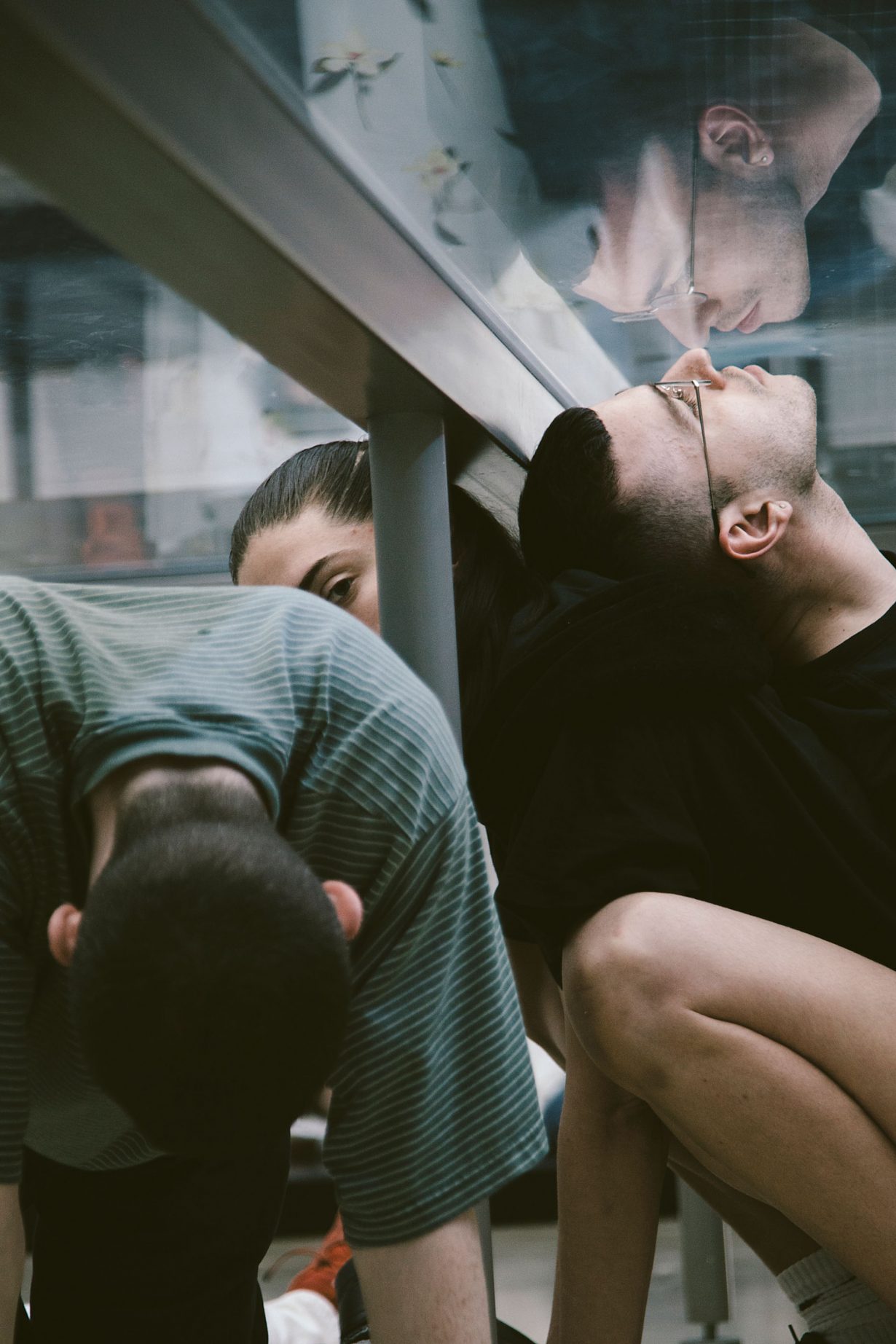

Like the silent-film master Chaney, who learned as the child of deaf-mute parents to convey expression and meaning through his body, Imhof is a master of the maximum-impact pose, and Douglas is in many respects her principal soloist. (Captured by Fraczkowski in recent years: Douglas posing topless and hips jutted forward with a falcon in Angst II; with one hand pressed against glass and the other thrust under her pants in Faust; as a reclining odalisque with basketball in 2019’s Sex.) The multi-hyphenate painter-musician-model has assumed the mantle of jester numerous times over the past several years in Imhof’s work, and while other performers have inhabited its spirit of chaotic menace, it is her body and her gestures that now largely define the role. Douglas is seen throughout performance footage of Natures Mortes with tongue jeeringly extended or licking the skin of her fellow performers as if to infect them, in an act both suggestive of medieval grotesques and singularly unnerving when taken in the greater context of the pandemic that was raging outside gallery walls. She will reprise the role in a suite (as yet untitled) of four videoworks, where she appears once again bare-chested in jeans, in front of a row of lockers set against a black background. As artificial snowflakes drift past the camera, she claws at her face and arms, leaving streaks of blood recalling the face paint (scars) of the Joker and other mutilated figures from popular literature.
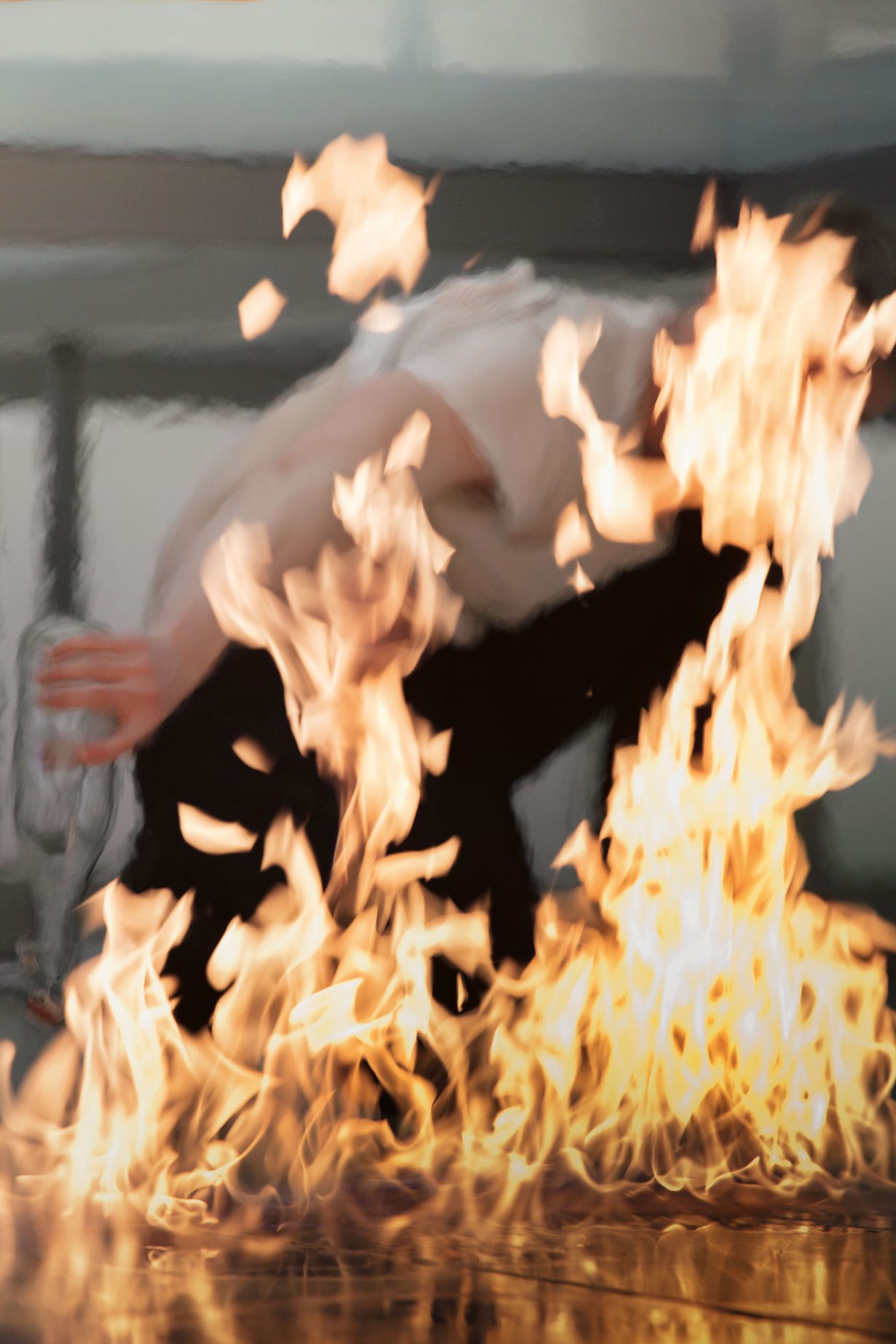
These four films, shot onsite in Russia, were initially intended to be exhibited at the Garage Museum of Contemporary Art in Moscow – before the institution closed its doors in response to the country’s invasion of Ukraine – with the joint exhibitions at the Stedelijk and Sprüth Magers serving as a second stop. Instead, with the Garage show shelved and the methodology of her previous shows, which evolved around visual spectacle, becoming less and less applicable to these revised circumstances, Imhof overhauled her exhibition concept, with the Stedelijk to serve as the originating venue for the resulting show, titled YOUTH. The exhibition resembles the labyrinthine floorplan of a hollowed-out warehouse in which alleys of shelving have been replaced by rows of lockers, with no works on view save the films shot days before evacuating from the country. That these dimly lit works are near impossible to capture on the viewer’s camera-phone befits both the bleak cultural climate and the artist’s own contrarian reputation. We find ourselves instead alone with Douglas the fool, whose muted demonstration of self-mutilation takes the place of live performance. A presentation format perhaps better suited to a moment of ever-mounting trauma, to which we’re becoming steadily inured.
Avatar II, a solo exhibition of work by Anne Imhof, is on view at Sprüth Magers, London, 23 September – 22 December; Anne Imhof – YOUTH will be shown at the Stedelijk Museum Amsterdam (copresented with the Hartwig Art Foundation, Amsterdam), 1 October – 29 January
